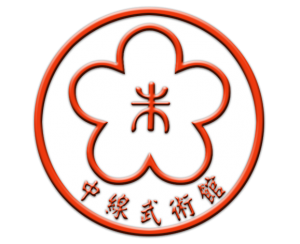Centerline Combat Arts: Functional Wing Chun in San Diego
Wing Chun is one of the most widely trained Chinese kung fu systems on the planet.
The Chinese Boxing Skills taken from Chu Sau Lei (Robert Chu’s) Wing Chun System contains all the component of striking (Punching, Kicking, Elbows and Knees), control and positional dominance from long, short and clinching ranges. Our Wing Chun system including the essential components of Distance, Timing, Positioning and Body Structure methods. It is ideal for traditional martial artists as a supplement to grappling training, for fitness or self-defense.
At Centerline Combat Arts (Jeung Shi Mo Shut Kwoon), we maintain our lineage from Yip Man through Hawkins Cheung to Robert Chu (Chu Sai Lei) to the chief instructor Dave McKinnon.
These skills have been used to become champions in MMA fights, Pankration and Kung Fu tournaments and to help students survive in real life situation.
Integrated Functional Training
Integrated Functional Training or IFT refers to the training system used to quickly teach, apply and troubleshoot the Wing Chun Kung Fu system. These are the same drills students will be familiar with from other Wing Chun schools but with a focus on application and Optimal Positional Dominance or OPD.
Wing Chun is a system based on a conceptual model – the conceptual model permeates each aspect of the system and therefore if we do not train according to this conceptual model we are not training Wing Chun. This incorporates:
1 Strategy3 Striking methods 4 Key strategies 5 Stages of combat 6 Energy signatures
Wing Chun specializes in close range combat: The tools, however, can be applied at long range, short range and clinched range. These fundamental techniques, linked with the conceptual model, create the material practiced and tested in the five drills.
8 Direction stepping 16 fundamental techniques Punching, Kicking, Elbow and Knee variations Sweeps, Reaps, Throws, Take downs5 Finishing sequences
The Five Drills: Training the five drills create functionality and effectiveness in the system. Each drill contains a component of learning the drill, developing fundamental skills, applying the skills with techniques according to the conceptual model, applying them against a resisting opponent and then in a sparring environment suited to the students level. Each skill developed in one drill is applicable and transferable to each other drill. Students who train consistently soon develop sound structure, power, Optimal Positional Dominance and stamina.
San Sao: Basic techniques, application and development of the fundamentals. Pak Sao: Driving with structure, receiving force and applying the 16 techniques and trapping on the fly. Kiu Sao: Manipulating your opponent’s balance and base, kicking from the clinch, throws and take downs. Chi Sao: The quintessential Wing Chun drill, teaching trapping, control, positional dominance, body manipulation and close quarter fighting. Gor Sao: Crossing hands incorporate bag and mitt work, and various levels of cooperative and non-cooperative sparring.Traditional Form Training
Students may choose to focus solely on the Integrated Functional Training, but many choose to complete the system by training in the forms as well. The few forms native to Wing Chun are information rich and have many layers of understanding to peel back. They are beneficial both in the martial sense and for health and longevity. Following these concise forms reinforces the proper movements and alignments of the body needed for application. These same forms have healthful benefits for the body and mind and promote relaxation, deep breathing and a mindfulness and presence. The forms taught include:
Siu Lim Tao: Small or basic training (Fundamentals) Chum Kiu: Sinking Bridges (Crane energy) Biu Jii: Darting Fingers (Snake energy) Muk Jong: Wing Chun Dummy Lik Dim Boon Kwun: Six and a half concept pole Baat Jam Dao: Eight slashing knivesHistorical & Complimentarily Training
Gu Lao Village Wing Chun Yuen Kay San Wing Chun Integrated Eskrima

